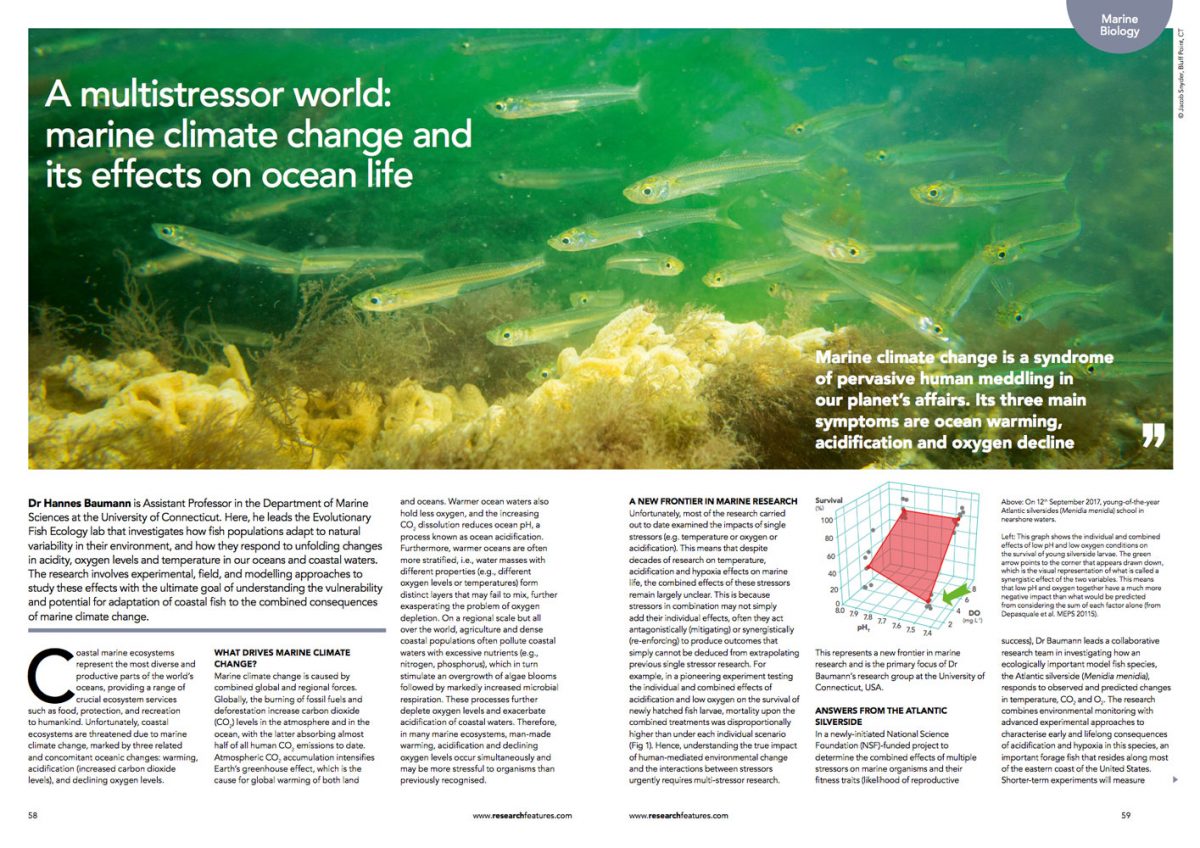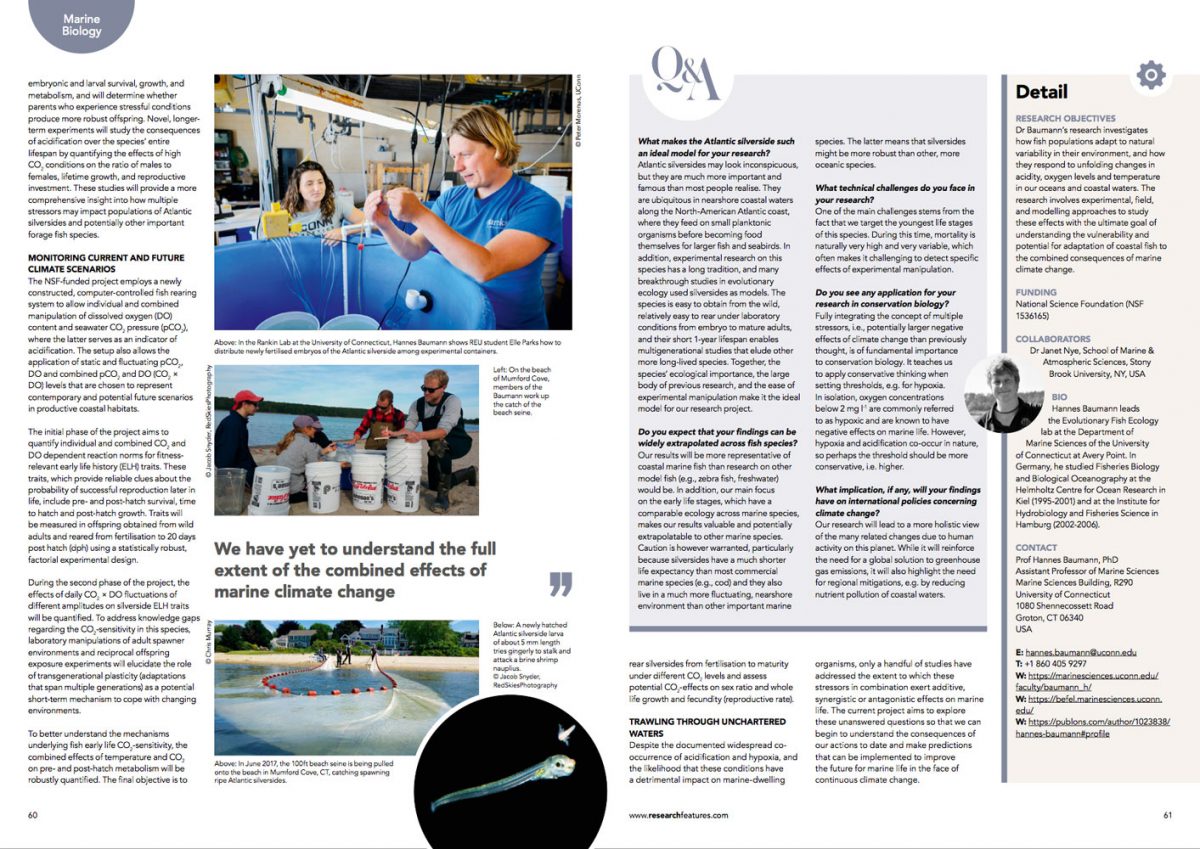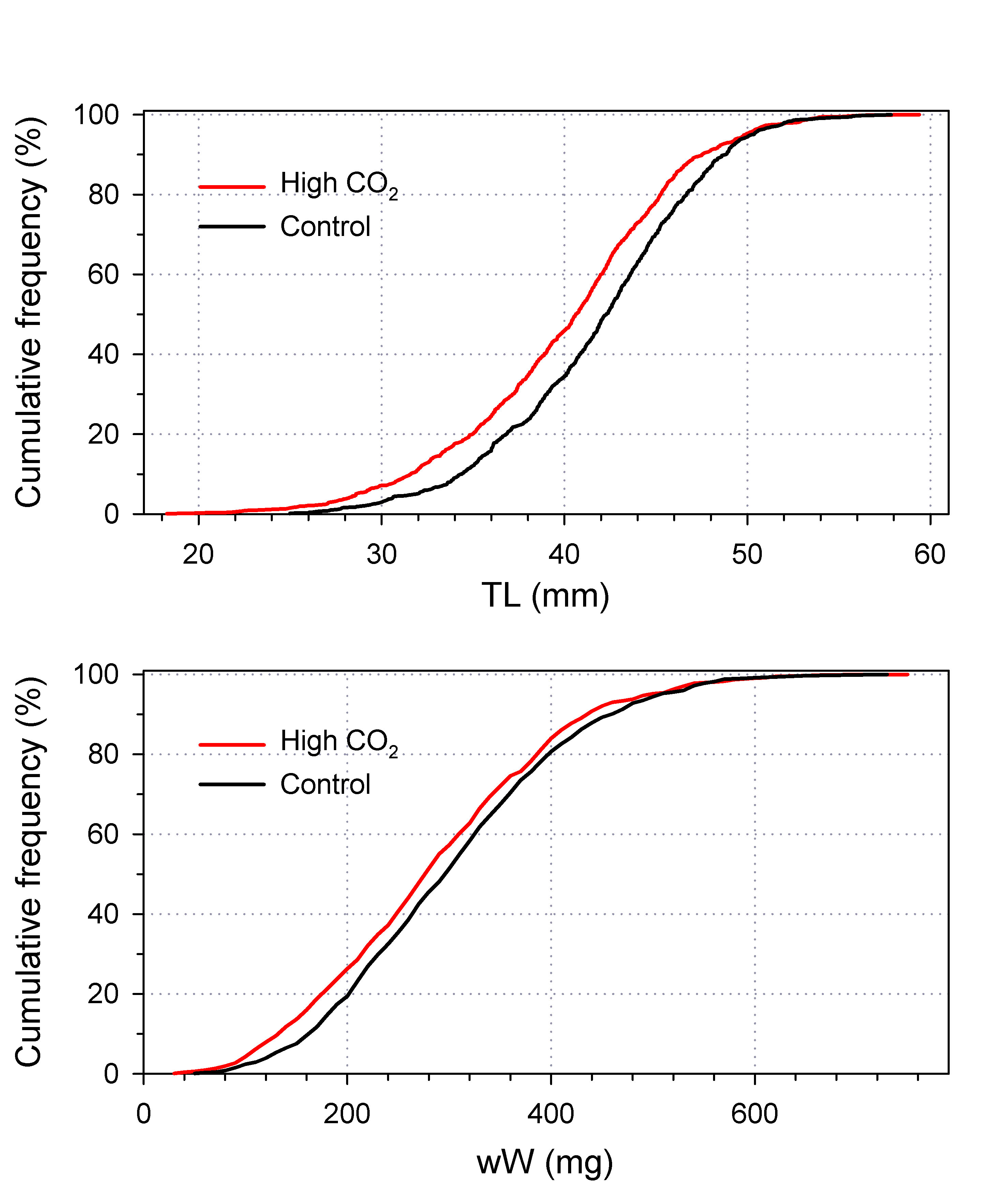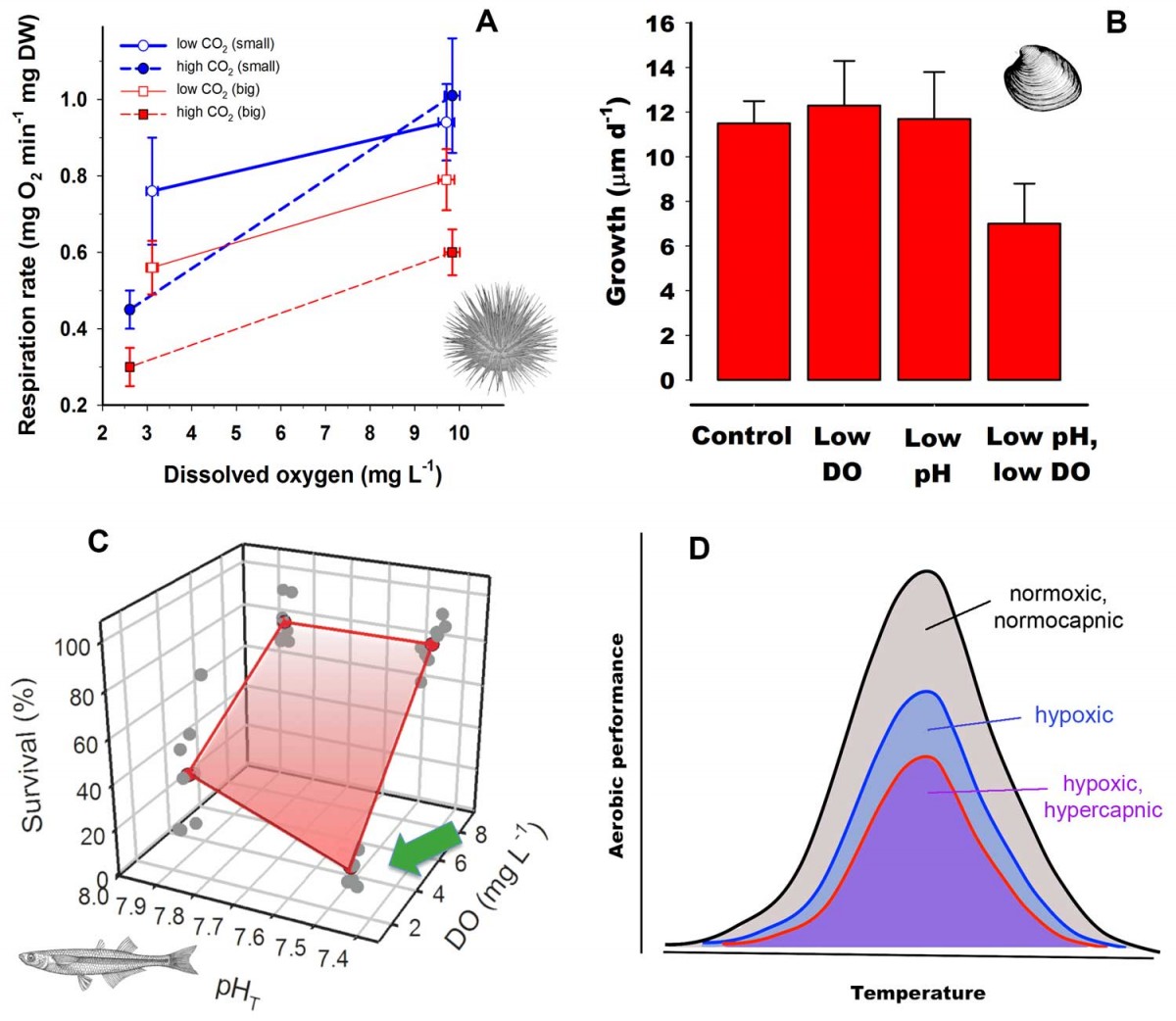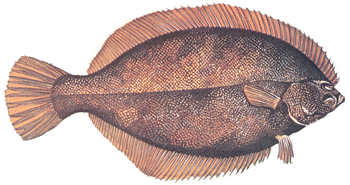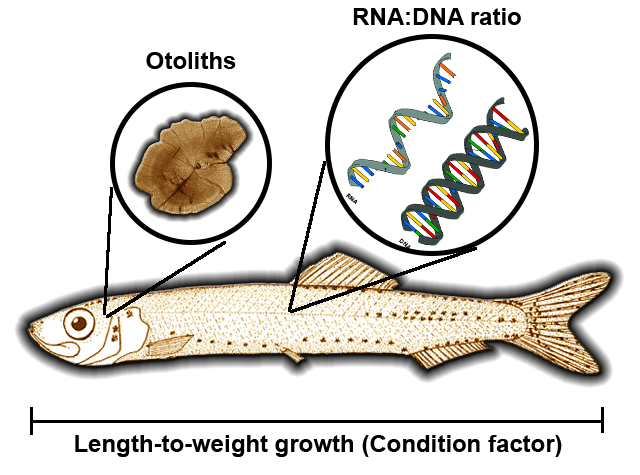This research feature makes the case for multistressor research to a broad general audience and introduces our NSF project and its participants. Download the feature by clicking on the pictures or the link below.
New Publications
[New publication] Mothers matter for the CO2 sensitivity of fish offspring
28 November 2017. The Journal of Experimental Marine Biology and Ecology just published the latest study by our group looking at differences in the CO2 sensitivity of Atlantic silverside offspring stemming from different mothers. Congratulations to Jacob Snyder for his first peer-reviewed publication.
Among the highlights of the study:
- Offspring produced by different females varied in their sensitivity to high CO2 conditions.
- Specific fatty acids in eggs were correlated to the log-transformed CO2 response ratio of embryo survival and hatch length.
- Maternal provisioning might be an additional determinant of CO2 sensitivity in fish early life stages.
Citation:
Snyder, J.T.*, Murray, C.S.*, and Baumann, H. (2018)
Potential for maternal effects on offspring CO2 sensitivities in the Atlantic silverside (Menidia menidia).
Journal of Experimental Marine Biology and Ecology 499:1-8
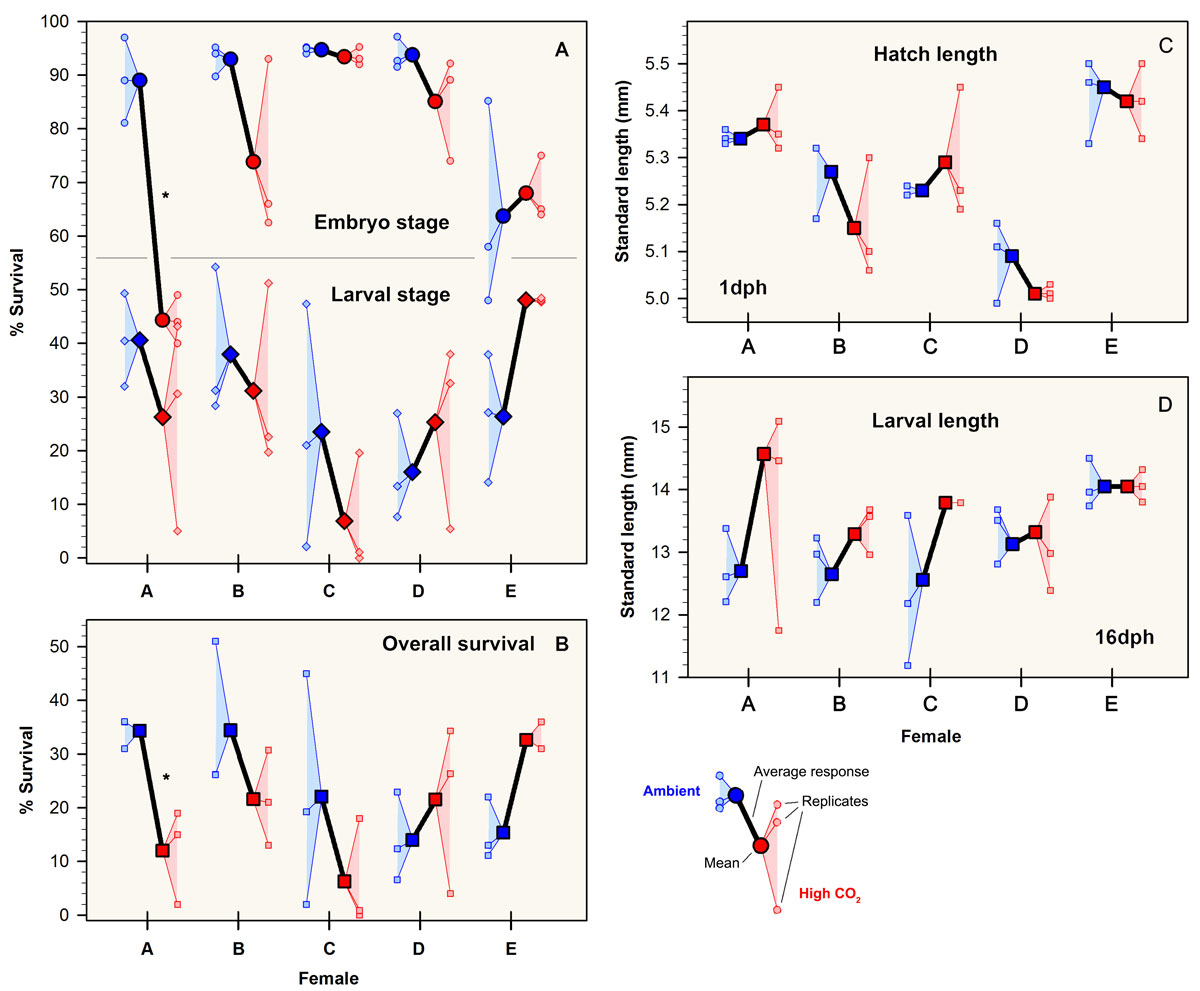
[New publication] Nearshore pH and DO fluctuations across 16 US estuaries!
October, 2nd, 2017: Happy to announce that Estuaries and Coasts just published (online) our article that looked at unifying principles of pH and DO fluctuations across many US nearshore habitats. The datasets belongs to the US Nearshore Estuaries Research Reserves System (NERRS) and is one of the most extensive monitoring datasets in coastal aquatic habitats. In this case, we used 15 years of continuous monitoring data (> 5 million data points) from 16 different reserves across the US Atlantic, Caribbean, Gulf of Mexico, and Pacific coasts and analyzed short- to long-term variability in pH and DO fluctuations. Among the highlights:
- Our analyses confirmed that large, metabolically driven fluctuations of pH and DO are a unifying feature of nearshore habitats. Even more so, we were able to show that across habitats, one can predict mean pH or mean diel pH fluctuations simply based on salinity and oxygen levels/fluctuations. This provided strong empirical evidence that common metabolic principles drive diel to seasonal pH/DO variations within as well as across a diversity of estuarine environments.
- As expected, there were no interannual, monotonic trends in nearshore pH conditions; instead interannual fluctuations were of similar magnitude than the pH decrease predicted for the average surface ocean over the next three centuries.
- By correlating weekly anomalies of pH, oxygen, and temperature, we found strong empirical support for the notion that coastal acidification — in addition to being driven by eutrophication and atmospheric CO2 increases — is exacerbated simply by warming, likely via increasing community respiration.
Citation and link:
Baumann, H. and Smith, E. (2017) Quantifying metabolically-driven pH and oxygen fluctuations in US nearshore habitats at diel to interannual time-scales Estuaries & Coasts (published online 2 Oct 2017)
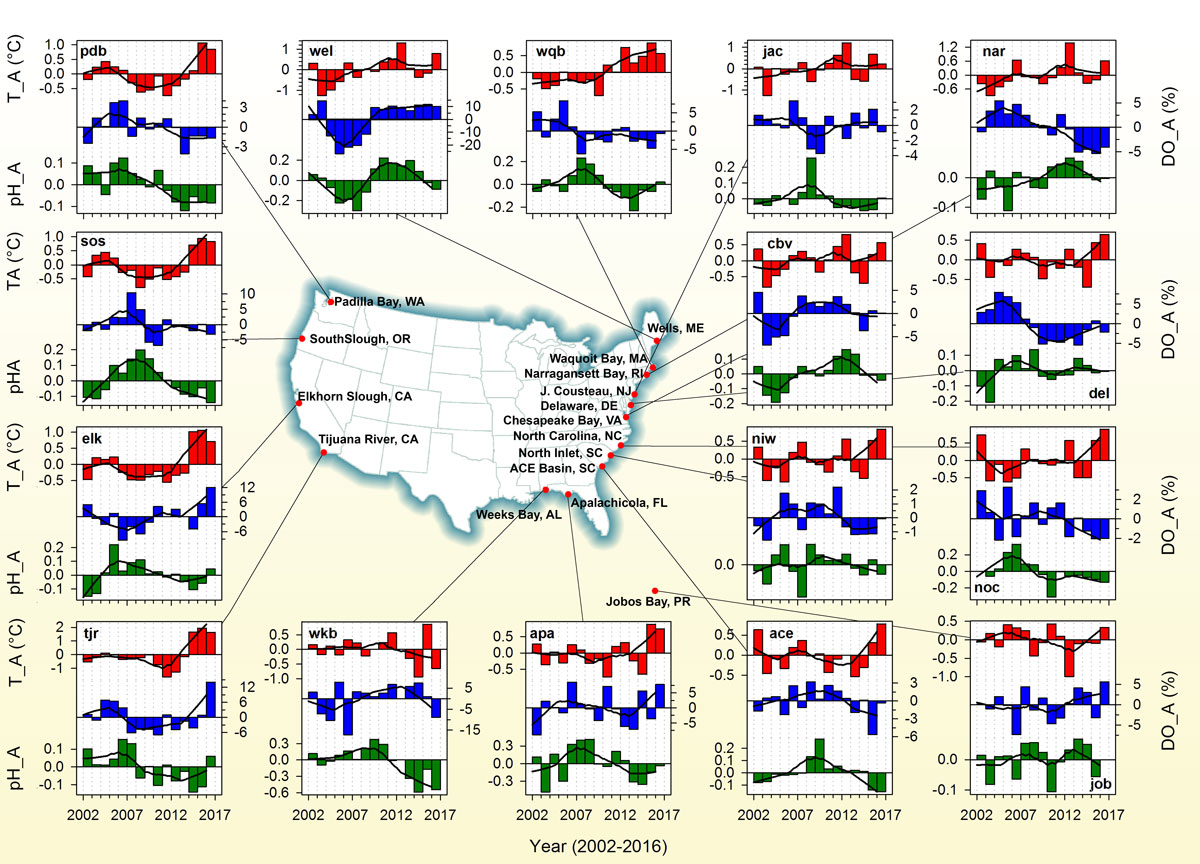
[New publication] Long-term growth consequences of acidification in Atlantic silversides
October 10th 2016 was a special day for our still young lab here at the University of Connecticut, Today, the ICES Journal of Marine Science published the paper of Chris Murray et al., which is the first of hopefully many publications of our experimental findings originating out of our new laboratory facility here at UConn Avery Point.
Chris and his co-authors report on a large-scale, quantitative rearing experiment on Atlantic silversides eggs, larvae and juveniles under contrasting CO2 conditions that took place between May – September 2015. This novel experiment was designed to address three critical issues lacking in previous ocean acidification research on fish. First, the study spanned several ontogenetic stages. Second, it used very large numbers of individuals to robustly characterize not just potential shifts in mean responses, but also changes in the distribution of length, weight, and condition factor. Third, it provided food at standardized, non-excess levels to prevent that potential metabolic costs of high CO2 exposure could be compensated by survivors simply by eating more food.
Overall the study demonstrated seemingly small but significant growth reductions due to high CO2 and identified a small number of fatty acids that were of significantly different concentrations in high vs. control juveniles.
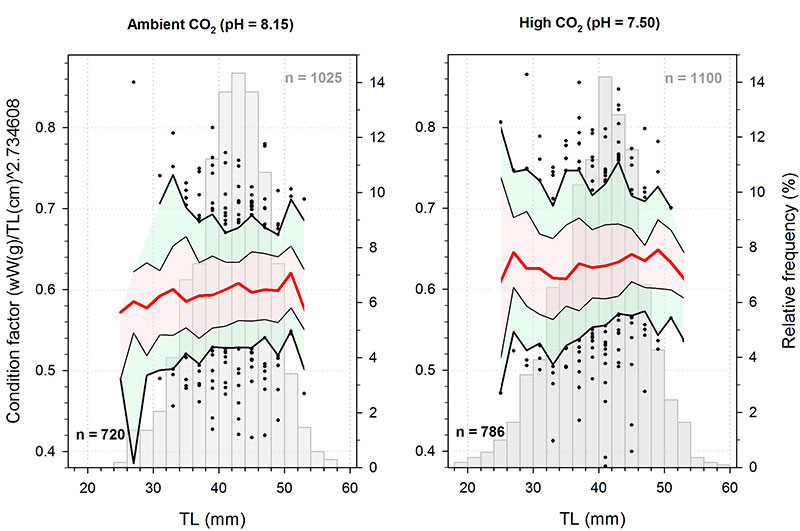
Murray, C.S.*, Fuiman, L., and Baumann, H. (2016)
Consequences of elevated CO2 exposure across multiple life stages in a coastal forage fish.
ICES Journal of Marine Science (published online 10 Oct 2016)
[New publication] Biology Letters publishes CO2 x Hypoxia review
Gobler & Baumann’s review provides a good overview over the nascent field of multi-stressor acidification and hypoxia work. A first part firmly establishes that virtually all hypoxic zones in the ocean are also acidified, given that metabolic processes (i.e., respiration) consume oxygen and release CO2 into the environment. In a second part, the sparse emerging evidence for multistressor effects of low pH (high CO2) and low oxygen are reviewed, showing that while the majority of effects are additively negative, every study so far has also found synergistically negative effects of combined stressors in at least one trait.
This invited review was published Open Access.
Gobler, C.J. and Baumann, H. (2016)
Hypoxia and acidification in ocean ecosystems: Coupled dynamics and effects on marine life.
Biology Letters 12:20150976
Abstract
There is increasing recognition that low dissolved oxygen (DO) and low pH conditions co-occur in many coastal and open ocean environments. Within temperate ecosystems, these conditions not only develop seasonally as temperatures rise and metabolic rates accelerate, but can also display strong diurnal variability, especially in shallow systems where photosynthetic rates ameliorate hypoxia and acidification by day. Despite the widespread, global co-occurrence of low pH and low DO and the likelihood that these conditions may negatively impact marine life, very few studies have actually assessed the extent to which the combination of both stressors elicits additive, synergistic or antagonistic effects in marine organisms. We review the evidence from published factorial experiments that used static and/or fluctuating pH and DO levels to examine different traits (e.g. survival, growth, metabolism), life stages and species across a broad taxonomic spectrum. Additive negative effects of combined low pH and low DO appear to be most common; however, synergistic negative effects have also been observed. Neither the occurrence nor the strength of these synergistic impacts is currently predictable, and there- fore, the true threat of concurrent acidification and hypoxia to marine food webs and fisheries is still not fully understood. Addressing this knowledge gap will require an expansion of multi-stressor approaches in experimental and field studies, and the development of a predictive framework. In consider- ation of marine policy, we note that DO criteria in coastal waters have been developed without consideration of concurrent pH levels. Given the per- sistence of concurrent low pH–low DO conditions in estuaries and the increased mortality experienced by fish and bivalves under concurrent acidifi- cation and hypoxia compared with hypoxia alone, we conclude that such DO criteria may leave coastal fisheries more vulnerable to population reductions than previously anticipated.
[e-lecture] Limnology & Oceanography publishes e-lecture on multistressors!
A suite of parallel anthropogenic changes affects contemporary marine ecosystems. Excessive carbon dioxide (CO2) pollution results in warmer, more acidic oceans with lower dissolved oxygen (DO) levels, meanwhile the emission of reactive nitrogen/phosphorus results in eutrophication, excessive microbial degradation and thus metabolic hypoxia and acidification. Despite decades of empirical research how each individual stressor of the ‘climate-change syndrome’ (i.e., temperature, CO2, DO) affects the fitness of marine organisms, we still know little about the combined effects of these stressors. This lecture gives an overview over the nascent field of multi-stressor approaches evaluating the climate sensitivity of marine organisms across taxa. In most studied cases, combined effects of these stressors exceeded those observed individually. Effects of combined warming, acidification, and deoxygenation have mostly been additive (no stressor interaction) or synergistically negative (stressor interaction). The occurrence and strength of synergistic stressor interactions in some species, life history stages, and traits comprises a vexing challenge but hints at potentially greater sensitivities of organisms to marine climate change than previously recognized. This lecture is intended for post-secondary students, providing them with illustrated examples from the most resent literature, while aiding in communicating the urgent need for empirical data from multi-stressor approaches.
Baumann, H. (2016)
Combined effects of ocean acidification, warming, and hypoxia on marine organisms.
Limnology and Oceanography e-Lectures 6:1-43
Species or ecotype? The curious case of the Key silverside
What constitutes a species …
…in the true sense has kept biologist’s head scratching for quite some time, and matters have only gotten more complex since the thunderous advent of genetic methods. Yet the distinction between a species and – say – an ecotype of a species is more than just academic quibble.
In the case of the key silverside, Menidia conchorum, a species that is only found in the hypersaline ponds on the Florida Keys, it’s quite literally an existential question. So far, the protocols and steps of protection apply only in cases of threatened species, which is perhaps something that ought to change.
O’Leary et al. went down to the Florida Keys and sampled the silversides in order to compare them morphologically and genetically to the ‘parent’ species, the tidewater silverside Menidia peninsulae. Their findings show that key silversides are distinct, but not quite their own species yet. In addition, the study revealed the large amount of inbreeding and genetic drift that is happening in each of these small hypersaline ponds.
The paper concludes that although ‘only’ an ecotype, the key silverside is threatened by loss of habitat and therefore still needs our protection!
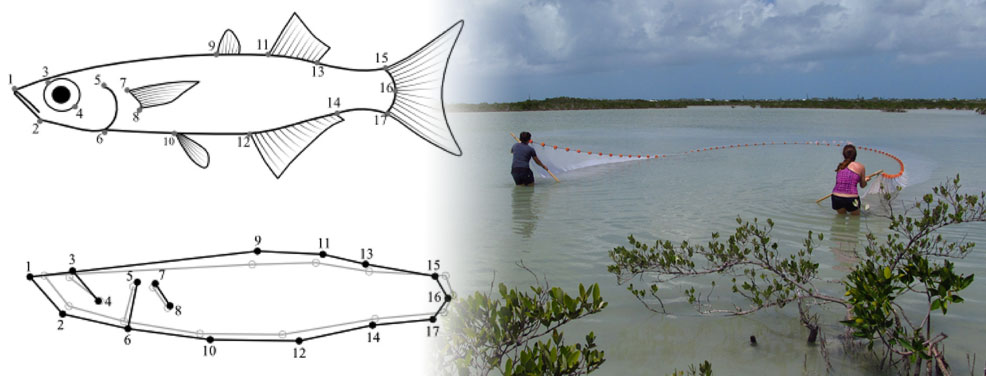
O’Leary, S.J., Martinez, C.M., Baumann, H., Abercrombie, D.L., Poulakis, G.R., Murray, C.H., Feldheim, K.A., Chapman, D.D. (2016)
Population genetics and geometric morphometrics of the Key silverside, Menidia conchorum, a marine fish in a highly fragmented inland habitat.
Bulletin of Marine Science 92:33-50
[Publication] Growth and mortality in coastal populations of Winter Flounder: implications for recovery of a depleted population
Yencho, M.A, Jordaan, A., Cerrato, R.M., Baumann, H., and Frisk, M.G. (2015) Growth and mortality in coastal populations of Winter Flounder: implications for recovery of a depleted population.
Marine and Coastal Fisheries 7: 246-259.
[Publication] Comparing different growth proxies in young juvenile sprat
Peck, M. A., H. Baumann, C. Clemmesen, J. P. Herrmann, M. Moyano, and A. Temming 2015. Calibrating and comparing somatic-, nucleic acid-, and otolith-based indicators of growth and condition in young juvenile European sprat (Sprattus sprattus). Journal of Experimental Marine Biology and Ecology 471:217-228.
[New Publication] Combining otolith microstructure and trace element analyses in Pacific bluefin tuna
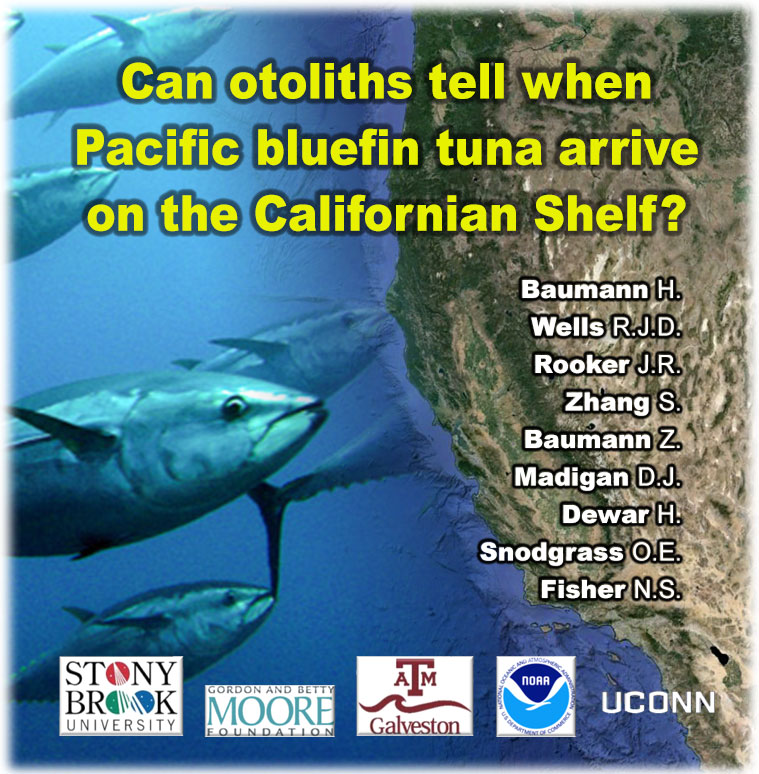
Juvenile Pacific bluefin tuna (PBT, Thunnus orientalis) are known to migrate from western Pacific spawning grounds to their eastern Pacific nursery grounds in the California Current Large Marine Ecosystem, but the timing, durations, and fraction of the population that makes these migrations need to be better understood for improved management. This new study published in the ICES Journal of Marine Science suggests that analyzing the trace elemental composition of bluefin tuna otoliths may divulge the time of arrival of the juvenile fish on the Californian Shelf. Scientists from the University of Connecticut, Stony Brook University, Texas A&M, as well as from NOAA collaborated in this effort, hoping to further develop this method to better inform managers in the future.
Baumann, H., Wells, R.J.D., Rooker, J.R., Baumann, Z.A., Madigan, D.J., Dewar, H., Snodgrass, O.E., and Fisher, N.S. (2015) Combining otolith microstructure and trace elemental analyses to infer the arrival of Pacific bluefin tuna juveniles in the California Current Ecosystem. ICES Journal of Marine Science 72:2128-2138.
